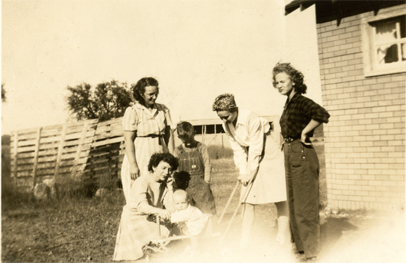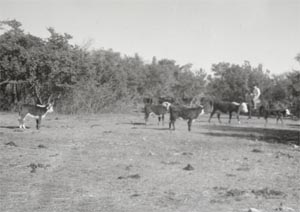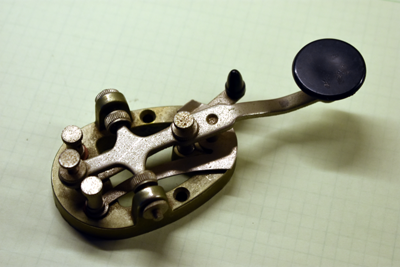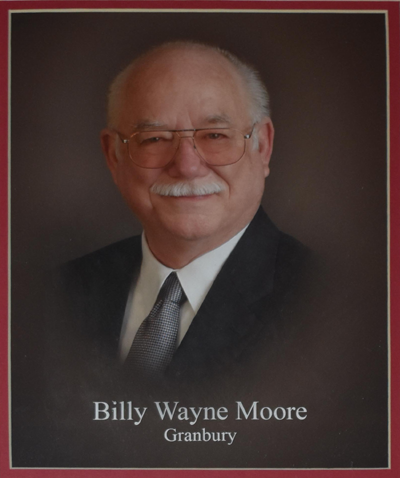The N5SE Home Page is a website intended to attract your attention by offering current technical information on band conditions, up to date solar information and links to the N∅NBH solar banner page. It features practical pages on homebrew projects, kit building, and semi-homebrew projects featuring modified kits or major additions to kits.
Of more interest is ham radio and its relationship to myself through the years. Let's go way back and start close to (or at) the beginning. I
was born in the pre-WW2 era in my maternal grandfather's house. However, that had little to do with my formative years. I was raised on a
 farm/ranch on the edge of the Central Texas Hill County area. Now this was a real working farm/ranch. No running water, indoor bathroom, electricity
or phone. My father built a four room single wall bungalow with no porches complete with wood stove, water bucket with dipper and kerosene lamps.
farm/ranch on the edge of the Central Texas Hill County area. Now this was a real working farm/ranch. No running water, indoor bathroom, electricity
or phone. My father built a four room single wall bungalow with no porches complete with wood stove, water bucket with dipper and kerosene lamps.
We raised cattle, chickens and hogs and butchered most of our own meat. We grew oats (usually with lespedeza intermixed), wheat, sorghum and corn. We bailed the oats and lespedeza for cattle fodder and combined the wheat. All of these provided for the family and the surpluses were cash crops: however, cattle were the main cash crop. For most of my formative years, we ground some of the wheat into flour and some of the corn into corn meal. We ate lot of cornbread and corn on the cob. Some of the sorghum was ground and used for chicken and hog feed.
Early on, I learned about work and chores. My first chores were gathering the eggs, picking up chips in the wood lot
for kindling and keeping the cattle water tank full. While monitoring the cattle water tank, I also kept track of the water
level in the tank used for house water and switched the windmill accordingly. Naturally as the years passed, my chore list
grew! By the age of ten, I was riding the rake used to prepare the oats for the bailing machine, a more complicated
job than it sounds like. By twelve, I was riding the combine as we not only combined our wheat, but contracted our
services out to others. Likewise, I was driving the truck as we hauled the bailed hay from field to the barn.
 By my teenage years, I was plowing fields, growing in my animal care skills and taking on more responsibilities.
After school, I gathered, watered and fed the animals. I pulled bailed hay from the barn and spread it out for the
cattle making sure all were accounted for; scattered sorghum and cracked corn for the chickens and slopped the hogs. In
general I became an accomplished cow puncher. My favorite winter time chore was burning pears to provide fodder supplement
for the cattle. I used a kerosene fueled hand pumped for pressure flame thrower to burn the spines from the ubiquitous
prickly pear that infests the Texas Hill Country. The resulting spineless prickly pear is an excellent high food value
fodder for cattle.
By my teenage years, I was plowing fields, growing in my animal care skills and taking on more responsibilities.
After school, I gathered, watered and fed the animals. I pulled bailed hay from the barn and spread it out for the
cattle making sure all were accounted for; scattered sorghum and cracked corn for the chickens and slopped the hogs. In
general I became an accomplished cow puncher. My favorite winter time chore was burning pears to provide fodder supplement
for the cattle. I used a kerosene fueled hand pumped for pressure flame thrower to burn the spines from the ubiquitous
prickly pear that infests the Texas Hill Country. The resulting spineless prickly pear is an excellent high food value
fodder for cattle.
Chores were not the only thing impacting my life early on. As far back as I can remember, I was fascinated by the
world of mathematics, aeronautics, astronomy, and how nature could be studied using these tools. My eyes were
really opened when I was about eight during one of our weekly Saturday treks into town to buy supplies; I discovered
the local Carnegie library. I now had a source of books that lead me down the path to my future. I learned about
physics and mathematics, but just as importantly I found the world of history and novels. I spent every night lying
on the floor behind my father's rocker reading by the light of kerosene lamps. The future was clear to me and I never
changed my mind. Moving through the grades at school, I took advantage of every math and science class. After
graduation I moved on to the university graduating with a double major in physics and mathematics.
While I ramble on, I must also update conditions of our domestic life. As soon as I was old enough to help, we added a back porch. My
Father bought a used butane tank which we buried and piped to the house. No more chopping wood for the stove and we had heat in each
room. My Mother was proud as punch over her new butane cook stove. As long as we were running pipe, we put running water into the kitchen
using gravity feed from an elevated tank. Then a front porch was added. Rumors were rampant that electricity was
 coming to the valley. We started a major remodel of the house. We pulled every single inside and outside wall, added studs and made double
walls. At this time, we added a bathroom, another bedroom, and doubled the size of the living room. Looking to the future, we wired the
house for electricity. Through this period, I gained a solid foundation of building design, carpentry, and became quite adept at wiring
a house. I was amazed and delighted when my Father used my rifle scope as a transit to level the house. Electricity came to the valley
between my freshman and sophomore years. A television set was added to our family routine and I got to erect the antenna, run the lead-in
through the attic, and down to the TV.
coming to the valley. We started a major remodel of the house. We pulled every single inside and outside wall, added studs and made double
walls. At this time, we added a bathroom, another bedroom, and doubled the size of the living room. Looking to the future, we wired the
house for electricity. Through this period, I gained a solid foundation of building design, carpentry, and became quite adept at wiring
a house. I was amazed and delighted when my Father used my rifle scope as a transit to level the house. Electricity came to the valley
between my freshman and sophomore years. A television set was added to our family routine and I got to erect the antenna, run the lead-in
through the attic, and down to the TV.
After the electricity arrived, things were looking up. Experiments and projects no longer required the truck battery to liven things up,
real power was available. However, parts and tools required real money. The parts bin started to grow by plugging away and collecting
junk radios and tv sets. For the first time, real power supplies were possible. During my Junior Year, I learned about ham
radio, but that required real money. A WW2 surplus J-38 key and a an unmodified ARC-5 40 meter receiver were among the first purchases.
Believe it or not, I got that dude cranking and started copying W1AW code practice sessions. Before summer the novice test was passed
and I became KN5JJZ. I ordered a forty meter crystal and tank coil from Applebees and built a 50L6/35W4 AC/DC 5 watt
transmitter on a plywood chassis. Using clothesline wire with 300 ohm twin lead lead-in, I strung up a 40 meter dipole. Worked my first
station that night about 300 miles away, K5GOB. Man, was I excited. Up went my 40 meter vertical made out of left over 2.5 inch
galvanized water pipe. It was so heavy we had to pull it up with a tractor.
About three months later, I passed the Conditional test and became K5JJZ. Went to a few club meetings and picked up some cheap 40 meter phone
crystals; modified a junk AC/DC broadcast receiver into a modulator and went on AM phone. The used junk electrolytic capacitor in my plywood
transmitter shorted, blew-up, set the plywood chassis on fire, and the whole mess wound up in my lap. What to do? It took a while, but I
latched on to an ARC-5 40 meter transmitter. Built another power supply and put that puppy on the air. Worked Cuba in the first week. One
humorous thing did happen; I scored a huge coil of surplus copper weld wire for almost nothing. My father got really excited over this. We cut
down cedar poles, put cross bars and insulators on them, and ran 220 down across the pasture. The cattle water well now had an electric pump
with a water tank float switch.
Graduation came, and my family gave me a used SB-40B they bought from the local Sheriff's office. For my birthday, I wrangled a Heathkit Q
Multiplier kit. My receiving ability really picked up. Worked during the summers and at college, I picked up a little money. My sophomore
year in college, I bought a car and went mobile by rigging a war-surplus transmitter and home-brew 80 meter converter. Somehow along this same
time, I acquired a new Heathkit DX-40. I moved them into my dorm room and strung a windom on top of the dorm.
My physics major started as nuclear physics, but soon merged into astrophysics and then to mathematical physics. Not yet fully understanding
how the business and outside world worked, I really only applied for one job going into graduation. I did not get that job, but was recruited
and offered a position doing plasma research at the Jet Propulsion Center. Not enthused with plasma research, I turned the position down! After
graduation, I returned home to find my vertical on the ground; but that was the least of my problems. I needed work and my family was facing a
 larger problem; the farm/ranch property was going to be at the bottom of a new Corps of Engineers Lake. I found a teaching job nearby and
the family purchased a new farm/ranch. The future was looking up. With all this going on, there was no time for Amateur Radio. Amongst
the turmoil, I met my life mate (57 years and counting). After two years the family was settled on the new farm/ranch. I was married and offered a position as
Geophysicist with a major oil company. My new bride and I moved to Tyler, Texas ready to face the future and learn about city life.
larger problem; the farm/ranch property was going to be at the bottom of a new Corps of Engineers Lake. I found a teaching job nearby and
the family purchased a new farm/ranch. The future was looking up. With all this going on, there was no time for Amateur Radio. Amongst
the turmoil, I met my life mate (57 years and counting). After two years the family was settled on the new farm/ranch. I was married and offered a position as
Geophysicist with a major oil company. My new bride and I moved to Tyler, Texas ready to face the future and learn about city life.
After one year in Tyler, we were transferred to the Houston Regional office and bought our first home. But that did not last long. After
another year, I was temporarily transferred to the Tulsa Research Center. After one more year, the transfer to the Tulsa Research Center
was made permanent and I was reclassified as a Research Scientist. After four more years, I was transferred to the General Office and
reclassified as a Geophysicist.
Arriving at the General Office, it dawned on me that my Amateur Radio License had expired. I looked up the exam schedule and took
the advanced exam which I passed. I soon received my new license, WA5VAP. I picked up a well-used Heathkit DX-100 and refurbished
it. Coupled with my trusty S-40B and a forty meter dipole under the eaves, I was on the air again. Somewhere, I acquired a HQ-140
in great shape, and started using it.
Years went by and I was pretty happy with my amateur radio status. I found other people interested in getting a license. My class
started with five students. All five passed their novice test and I was the first QSO for all five. One of them actually built a
homebrew 6L6 novice transmitter.
One of my students was interested in getting a higher class license and asked me hold a class for him. He was a great
student. In just a short time, we both passed the extra class exam. In another year, we both applied for vanity
calls and I became N5SE. At this time, I also upgraded to a new Yaesu FT-101.
The world was bright. I had a growing family, a good job and a new rig. A couple years later, I got an Icom IC-215 for Christmas. That
summer, I bought an Icom crystal controlled 5 watt mobile rig and put it in my car. As commented earlier, the family was growing so
we moved into a larger house. Early on, the 6 band vertical was erected at the corner of the house. My "ham world" was stabilized
for a few years.
After ten years at the Tulsa General Office, I was named Director, Geophysical Systems. During those ten years, more and more
mathematical physics had entered the geophysics realm to describe the Earth and its response to seismic stimulus. More and more
 sophisticated mathematics were being used to define the acquisition and processing of geophysical data . The literal explosion
of computer technology was making the application of mathematical physics to these problems possible.
sophisticated mathematics were being used to define the acquisition and processing of geophysical data . The literal explosion
of computer technology was making the application of mathematical physics to these problems possible.
After 17 years at the Tulsa General Office and 21 years total in Tulsa, the Tulsa General Office was closed. Administrative
functions were moved to Chicago and operation functions (including myself) were moved to the new Houston General Office. As
part of the move, I sold the FT-101 and 2 meters took the forefront in Houston.
After only two years in Houston, I was transferred to the corporate international subsidiary General Office, also located in
Houston, where I was assigned to ALAME (Africa, Latin America and Middle East). This move was to give me more experience in dealing
with foreign governments and dignitaries. This was going well, but four years later, a corporate wide buy-offer was announced. Putting
pen to paper, I could not refuse the offer threfore accepting the offer and retiring.
We moved out into the country and started our new life. I tried 2 meters, but got zero. There was so much to do to get our
new place in order; there was no time to spend on ham radio. Ten years after moving out in the country, I was appointed
to the Brazos River Authority Board of Directors. Then in a year later, I started my own company, Slides n' Moore which
is still in business. Then three years later Inanovation Inc, a small start-up lithium battery company in Indiana,
named me to their Board of Directors.
We decided the upkeep of the country home plus all the other we had going was too much for retired life. In addition, travel
to our doctors and hospital was quite lengthy.
We moved back to a Houston suburb on lakefront property. The fishing and bird watching was great. I built a 38 special
and got on 30 meters. I was back in business. But age raised its head. We ran into the problem of maintaining the property
and it was just too much for us. After six years, we sold the property and built a new smaller home just four blocks away.
The new home has been great, small enough that maintenance is not so bad. I am no longer on any boards but still have our small
business. I bought a couple of Baofeng VHF/UHF handy talkies and keep up to date on 144 and 440 Mhz. I ran into a real
surprise for antennas. We had our garage totally insulated to give me a workshop. To help maintain a better environment
for our HVAC, we had the entire inside roof including the garage sealed with a reflective aluminum layer that reflects the
heat back out of the attic. Works great, but all attic antennas just set there. No radiation gets out; it is just like a
well shielded dummy load. So, for the time being, my ham world is stuck on VHF/UHF.
Well, "A Little History" is over; but stay tuned, more is coming.
73's de N5SE, Billy


















